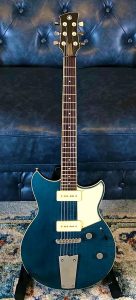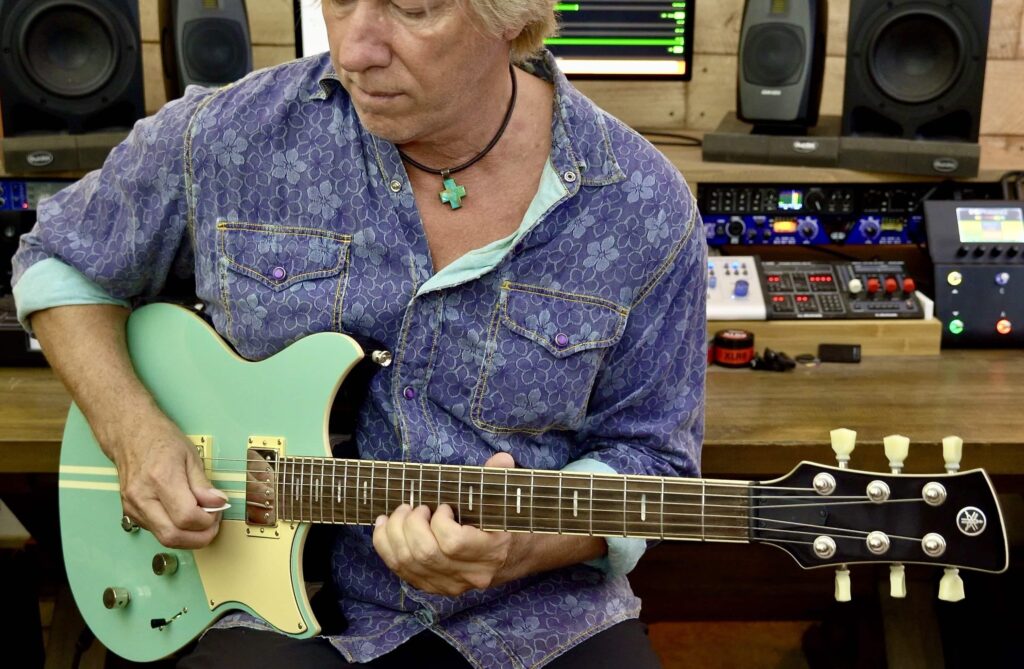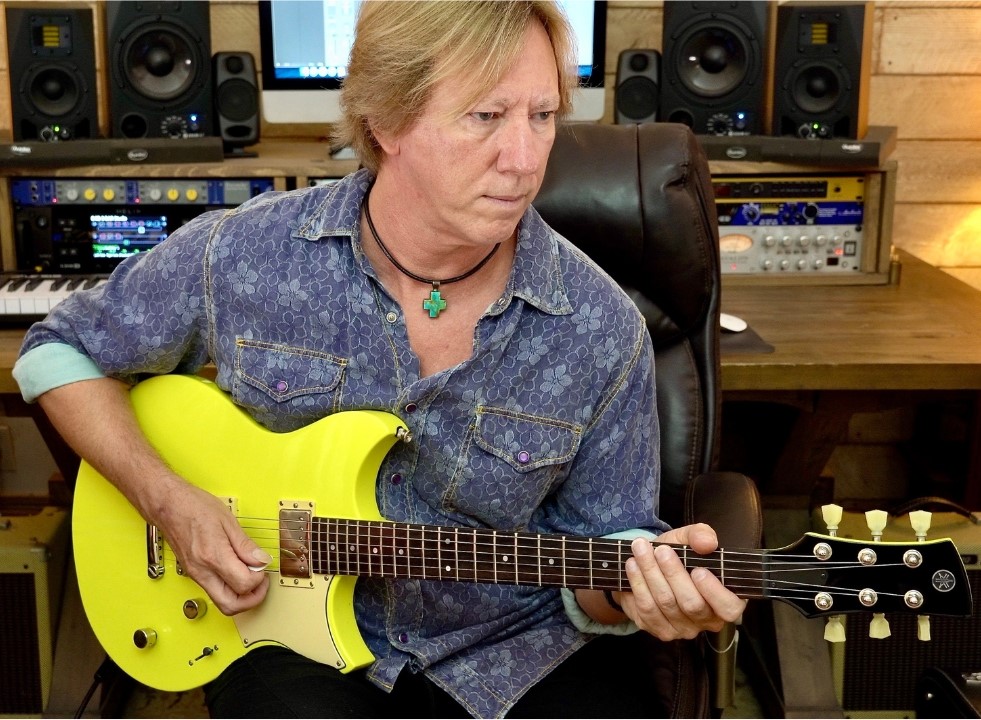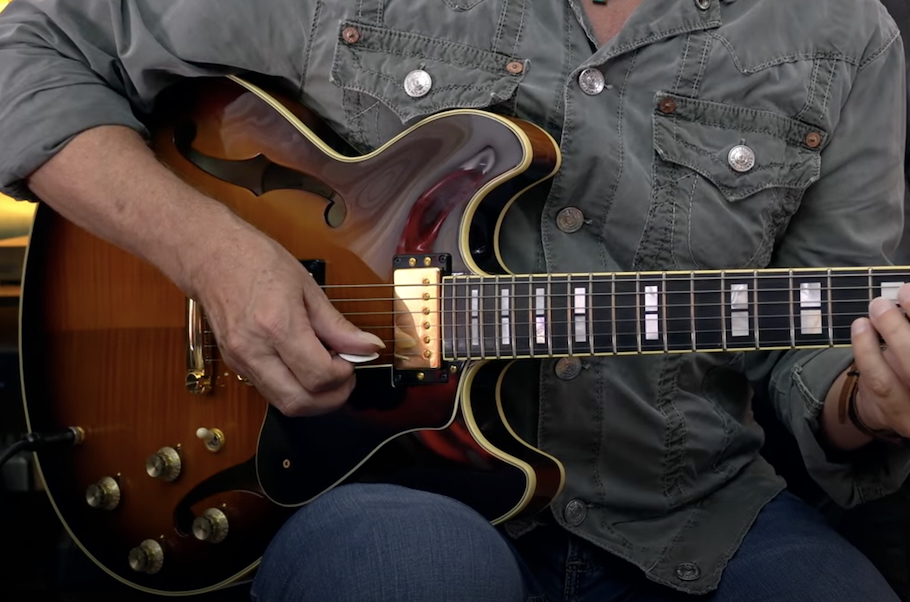Phrase to Amaze
Use rhythmic displacement to add the cool factor to your solos.
The first five years of my guitar playing life were spent studying rhythm guitar, not lead. For some reason, I had no desire to learn scales, arpeggios and melodies.
Focusing my attention strictly on harmonic structures and stylistic rhythmic variations early in my development gave me a solid musical foundation for creating cool chord progressions and a strong sense of the “groove and pocket” for layering multiple guitar parts.
I think of “groove” as the underlying rhythmic feel of a song, and “pocket” as the placement of the parts within the groove. When there are multiple instruments in a mix, finding your own pocket is essential to maintaining clarity in an arrangement.
Understanding how guitar parts lock together to create layers and harmonic interest is fascinating to me, and that may be why I hear melody and lead guitar parts as rhythms that also need to sit in pockets of their own. It’s not just a matter of playing notes over the top of an arrangement or backing track, it’s the purposeful positioning of those notes to interact with the other instrumentation and composition.
What is Phrasing?
The rhythmic delivery of your melodic message is called “phrasing.” This is one of the key elements to creating a personal identity on any instrument. After all, what would a series of musical pitches be without rhythm? A cluster of unorganized sound.
So let’s consider musical phrases to be an organized sequence of notes, arranged as pitch and rhythm. How we personally arrange those elements will have a huge impact on how our music is perceived by an audience.
I’m always looking for new ways to develop my melodic palette, and over the years, I’ve formulated several approaches to expand my musical vocabulary without deconstructing my stock phrases.
Rhythmic Displacement
One of the simplest ways to get more mileage out of your ideas is to place phrases in new locations within a bar (measure) of music — something called rhythmic displacement (sometimes referred to as melodic displacement). But before I get ahead of myself, let’s first establish a description of a measure of music that shows the downbeats as numbers and the plus sign “+” as the upbeat (the “and”). A simple bar of four beats would therefore look like this:
1 + 2 + 3 + 4 +
As you can see, each beat has been divided into two equal parts — the downbeat (number) and the upbeat (plus sign). We can choose to start our phrases on any one of those divisions, provided we control our hands and don’t let muscle memory control us. Playing with this kind of control and intention is going to be a challenge for many guitar players, but with concentrated effort, it can change your phrasing ability forever.
For example, starting a musical phrase on the downbeat of “one” will sound immediate, while starting it on the downbeat of “three” will leave more space at the beginning of the bar, allowing the music to breathe and sound more laid back. As you move phrases further into the bar, you’ll also notice that the end of your phrases may resolve to a new location in the next measure … which can have the unintended — but often good — consequence of landing on a new chord for melodic variation.
I’ve worked with a lot of guitar students who tend to start every phrase on downbeats only. I think this is more of an unconscious thing than a deliberate approach, but it can become an obstacle in creating interesting phrases. Personally, I like to place the start of my phrases on upbeats — at all different points within each bar. I think this sounds hipper and less predictable to the listener.
The Video
In this video, you’ll hear me play two eight-bar solos. In each solo, I place my phrases on the upbeat (the “and”) of each of the four downbeats. In other words, the first phrase is started on the upbeat of one, the second phrase on the upbeat of two, etc. Count along as you listen to the solos to give yourself a solid reference of this phrasing approach. To further demonstrate this, I then play four separate solos, with all the licks of the first solo starting on the upbeat of one, all the licks of the second solo starting on the upbeat of two, etc.
I’ve also placed the backing track at the end of the video so you can try out all these phrasing ideas for yourself, using the G Blues (G Minor Pentatonic) scale. In addition to choosing where you start your phrases, you’ll want to end and resolve your phrases to the tones of the Gmi7 chord: G, B♭, D and F.
The Guitar

The P90 single-coil pickups in the Yamaha Revstar 502TFM I’m playing in this video are perfect for this track. I used the neck pickup exclusively during all the solos for a smooth and creamy tone, and the jumbo frets on the 13-inch radius rosewood fretboard made string bending a breeze. The guitar is great visually, too! Its subtle flame maple top is finished with a hand-rubbed Vintage Japanese Denim, effectively eliminating glare from the camera lighting.
Note that I’m running the Revstar through a Line 6 Helix® guitar processor in stereo, direct to the recording software via an audio interface — no amplifier is used.
The Wrap-Up
We can all learn scale shapes and the resulting chord tones and apply them to a guitar fretboard to create melodic lines and licks … but that’s only half of the musical equation.
Organizing those pitches into compelling rhythmic phrases and then placing them creatively in each bar will give you ultimate command of your instrument and the ability to express yourself fully as an improviser. Don’t just play it, phrase it!
Photograph courtesy of the author.
Check out Robbie’s other postings.
Click here for more information about Yamaha Revstar guitars.
Click here for more information about the Line 6 Helix guitar processor.















